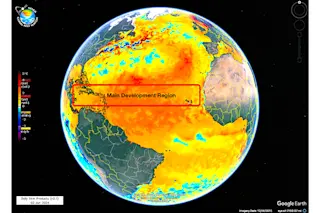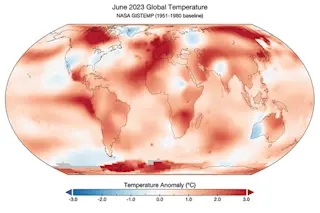Long-range forecasting is the goal of many an atmospheric scientist, including those in the employ of the National Oceanic and Atmospheric Administration. noaa is trying to develop the capability of predicting climate on longer time scales--a season ahead, or a year ahead, rather than three days ahead, says atmospheric scientist Donald Hansen of the University of Miami. And the generally accepted belief is that the longer-term variations in climate are influenced very strongly not just by the atmosphere but by the temperature structure in the ocean.
In search of clues to help explain long-term climate patterns, Hansen and his noaa colleague Hugo Bezdek recently pored over 45 years’ worth of North Atlantic sea surface temperature records, from 1948 to 1992. Unfortunately, they didn’t find out how to predict the climate a year in advance. But they did uncover some strange ocean phenomena that, so far, defy conventional explanation: huge blobs ...














